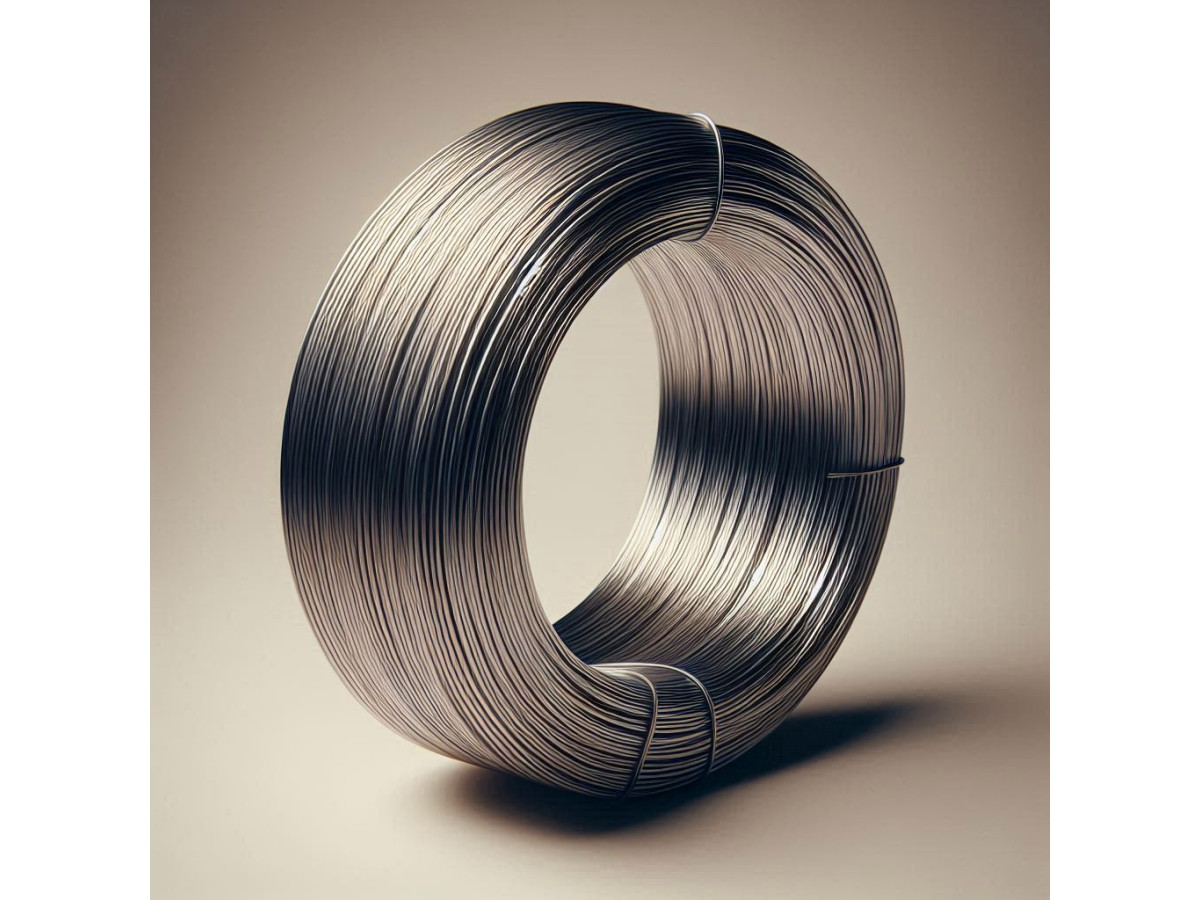The production of stainless steel wire is a complex multi-stage process that requires high precision and quality control at every step. The journey from raw material extraction to the finished product involves numerous technological operations, each playing a key role in ensuring the required characteristics of the final product.
Stages of Stainless Steel Wire Production
The initial stage of production is the extraction and preparation of raw materials. The main components for the manufacture of stainless steel are iron ore, chromium, nickel, and other alloying elements. Iron ore is extracted by open-pit or underground mining methods, after which it undergoes a beneficiation process to increase the content of valuable components. Chromium and nickel ores also undergo preliminary treatment before being used in production.
The next important stage is the smelting of stainless steel. Modern production utilizes electric arc furnaces, where metal scrap and ferroalloys are melted. Strict adherence to the proportions of alloying elements is critically important for obtaining steel with the desired properties. At this stage, the chemical composition, melting temperature, and other parameters are monitored.
What is the Material Made Of?
Stainless steel is an alloy of iron, with chromium being the main alloying element (at least 10.5%). It is chromium that provides the steel with corrosion resistance.
To improve various properties, other elements are added to stainless steel:
- Nickel increases the ductility and strength of the material.
- Molybdenum enhances resistance to pitting corrosion, making the steel even more durable.
- Manganese improves strength characteristics, making the steel tougher and more reliable.
- Titanium stabilizes the steel structure and prevents intergranular corrosion, which is especially important for welded joints.
- Niobium increases heat resistance and improves the weldability of steel.
The combination of these elements in varying proportions allows for the creation of stainless steels with a wide range of properties, making them indispensable in many industries.
After smelting, the molten metal is poured into billets—slabs or blooms. The next step is hot rolling, during which the billet is heated to a temperature of around 1200°C and rolled on special mills to obtain a smaller cross-section billet. Hot rolling significantly reduces the size of the billet and improves the metal's structure.
How is the Quality of Stainless Steel Wire Production Controlled?
Key quality control parameters in the production process:
- To ensure the necessary wire properties, the content of alloying elements (chromium, nickel, molybdenum, etc.) is strictly monitored. Deviations from the specified composition can significantly affect corrosion resistance, strength, and other material characteristics.
- The strength and ductility of the wire determine its ability to withstand loads and deformations. These parameters are monitored through mechanical testing (tension, bending, etc.).
- Precision in diameter, cross-sectional shape, and other geometric parameters of the wire is extremely important for its further processing and application.
- The wire's surface must be smooth, free of cracks, pits, and other defects that may reduce its strength and corrosion resistance.
- The microstructure of stainless steel has a significant impact on its properties. Monitoring the structure allows for the assessment of material uniformity, the presence of phase transformations, and other structural imperfections.
- Corrosion resistance is one of the main properties of stainless steel. It is determined through special tests in various aggressive environments.
- Internal defects (pores, inclusions of non-metallic particles) can reduce the strength and durability of the wire. Various non-destructive testing methods (ultrasonic, X-ray, etc.) are used to detect them.
- The properties of the wire must be uniform along its entire length. To monitor uniformity, selective tests are conducted on different sections.
After hot rolling, cold drawing follows—one of the most important stages in wire production. The wire is drawn through special dies with gradually decreasing diameters. This process allows for the production of wire with the required diameter with high dimensional accuracy and surface quality. Between draws, the wire undergoes heat treatment to relieve internal stresses and restore ductility.
Particular attention is paid to the finishing treatment of the wire. At this stage, the surface is cleaned of scale and contaminants, straightened to eliminate residual curvature, and protective coatings are applied if necessary. Modern technologies allow for the production of wire with high surface cleanliness and dimensional accuracy.

